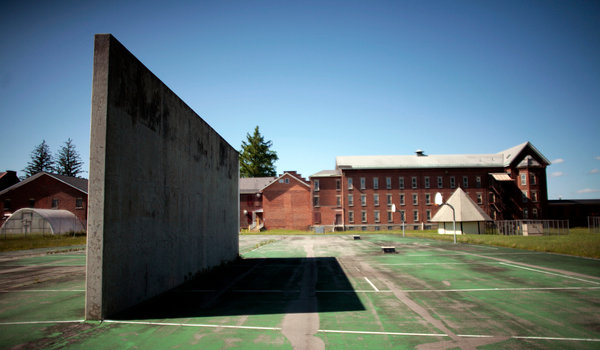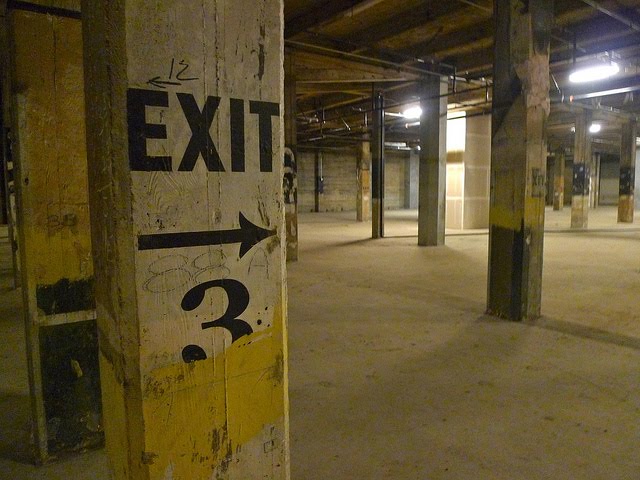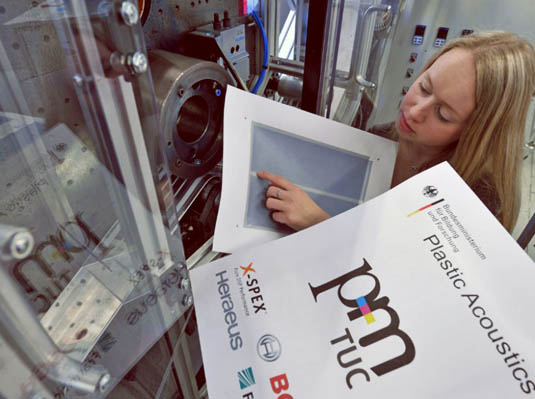 [Image: Prisons for sale; photo by Nathaniel Brooks for The New York Times].
[Image: Prisons for sale; photo by Nathaniel Brooks for The New York Times].
The State of New York is hoping to sell its old prisons.
“One property, in the Hudson Valley, includes a 16-car garage, a piggery and hundreds of yards of lake frontage,” the New York Times explains. “Another offers 69 acres of waterfront land on the west shore of Staten Island, complete with a two-story gymnasium, a baseball diamond and an open-air pavilion.” Some of the sites actually sound amazing:
Among the facilities the team is considering selling are 23 state-owned residences set aside for prison superintendents. Some are quite lavish: one in Auburn, to be auctioned this summer, is an 8,850-square-foot brick mansion with eight bedrooms, six bathrooms, an attached gazebo and a barn-size garage.
The article somewhat ironically suggests that “the ideal buyer” of one the prisons would be “someone who craves space to spread out.”
Despite the piece’s pessimistic tone—”You couldn’t make it into a hotel. You couldn’t make it into an apartment complex. You’re talking millions of dollars to renovate. Who’s going to do it?”—I can’t help but wonder if someone couldn’t buy one of these places anyway, admit that most of the complex will simply be left to ruin, consumed by weeds and filled with pigeons, but then transform some core part of it into a kind of architectural research center, its very setting the most intense spatial lesson of your time spent writing and studying there.
(Earlier on BLDGBLOG: Buy a Tube Station, Buy an Archipelago, Buy a Map, Buy a Torpedo-Testing Facility, Buy a Fort, Buy a Church, Buy a Silk Mill).


 [Image: “
[Image: “ [Image: “
[Image: “
 [Image: Art by
[Image: Art by  [Image: The
[Image: The 
 [Image:
[Image:  [Image: Ole Scheeren’s “
[Image: Ole Scheeren’s “
 Like the
Like the  [Image: Konstantin Melnikov’s “
[Image: Konstantin Melnikov’s “
 [Image: L.A.’s original subway, now walled-off beneath downtown; photo by
[Image: L.A.’s original subway, now walled-off beneath downtown; photo by  [Image:Photo by
[Image:Photo by  [Image: A walled-up sign announces, “TRAINS”; photo by
[Image: A walled-up sign announces, “TRAINS”; photo by  [Image: Photo by
[Image: Photo by 
 I finally became a paying member of
I finally became a paying member of 
 [Images: From
[Images: From  [Image: Photo by I. Yakovlev/Itar-Tass, courtesy of
[Image: Photo by I. Yakovlev/Itar-Tass, courtesy of 
 [Images: (top) photo by Tatjana Paunesku; (bottom) photo by S. Tapio. Courtesy of
[Images: (top) photo by Tatjana Paunesku; (bottom) photo by S. Tapio. Courtesy of 
 [Image: Michael Maltzan’s
[Image: Michael Maltzan’s  [Image: Los Angeles; photo by
[Image: Los Angeles; photo by  [Image: Los Angeles; photo by
[Image: Los Angeles; photo by 
 [Image: Wifi-blocking wallpaper from the
[Image: Wifi-blocking wallpaper from the  [Image: Printed electronics produce 2D loudspeakers; photo by Hendrik Schmidt, via
[Image: Printed electronics produce 2D loudspeakers; photo by Hendrik Schmidt, via 


 [Images: Lasercut
[Images: Lasercut 
 [Image: A map of fictional mega cities, via
[Image: A map of fictional mega cities, via